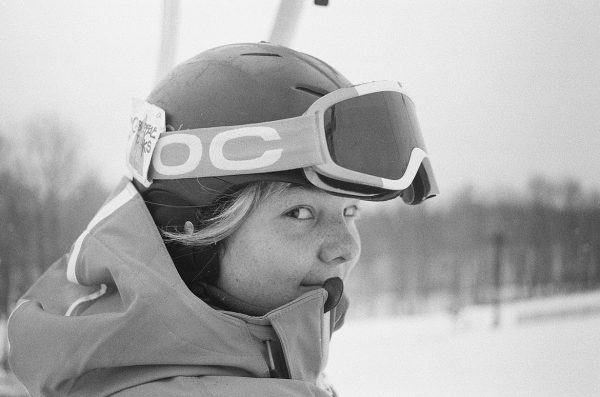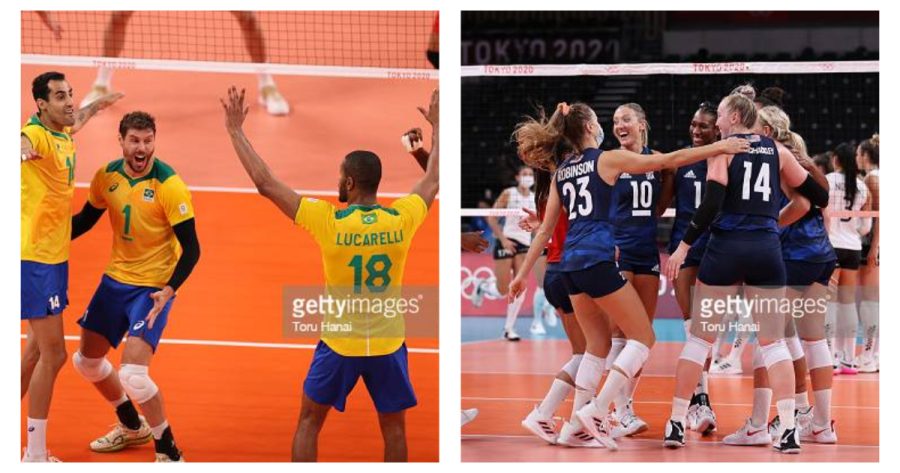The Sidelines: the varying social norms around athletic uniforms

More stories from Olivia Oorbeck
There are many components that contribute to an athlete’s performance. For instance, equipment used while competing, lifestyle outside the sport, and practice leading up to competition can play a large role in how an athlete performs as well as how an athlete is perceived. However, one key component that often goes overlooked on the importance scale of any athletic career is the uniform worn.
Throughout history, sports have always had different outfits based on the specific sport that is being played. Uniforms have changed with the styles and culture of the different eras. In recent decades, women have become more included in playing sports at all levels, including professionally. Since this transition, we have seen a shift in how uniforms are designed and worn by both men and women. In fact, we have also witnessed discrepancies between the genders as well.
One difference that can be pointed to is the tendency toward the sexualization of women in certain sports driven by their uniforms. Some of the more obvious sports that have exemplified this include volleyball, track and field, and competitive cheer. If you look at the sport of volleyball, many female volleyball players are seen wearing short, tight spandex shorts as part of their uniforms. This is a huge contrast to their male counterparts, who can be seen wearing longer, looser shorts that they sometimes even pair with long spandex that is worn underneath and reaches right above the knee. The sport of volleyball is the same for both men and women yet women are sporting a much “skimpier” product.
Another example of a uniform discrepancy that could be seen as hyper-sexualizing women can be seen in competitive cheer uniforms. Even though the men and women are often times on the same team, they are often issued completely different uniforms. The men are often seen wearing either a long or short sleeve shirt with pants that go down to their ankles. Women on the other hand are often dressed in skin-tight tops and even crop tops. Women’s cheer uniforms are often short mini-skirts or extremely tiny shorts that are usually skin-tight. These are only two examples, but there are many more that point to a a greater divide. These differences not only can change how we perceive men and women in sports, but they also seem to distract us from the sport and athleticism itself.
Another argument that has been up in the air is that women’s uniforms being “more sexy” due to highlighting the female figure helps draw large audiences and even draws more men to watch women’s sports. This is sexualizing women and not honoring women for their athleticism. In fact, some even have gone as far as saying that women’s uniforms that highlight the female body draw is an intentional effort to grow the audience of female sports. Even if this is minutely true, it is unfortunate that we as a society are so focused on what an athlete wears. Sports should always be more about the community, the athleticism, and the camaraderie rather than how someone should be perceived based on his or her looks.
With this in mind, there has been a positive change that is being observed and acknowledged in sports regarding the differences between some of the gender-specific uniforms. Some of the changes include new regulations placed on uniforms. For instance, the NCAA changed the requirements of what females are allowed to wear in volleyball. “The playing uniform consists of a jersey plus shorts/briefs, pants or culottes (one or two-piece).” This new regulation allows a female athlete to have a choice in how much of her body is exposed.
Even though there has been movement in a change of direction from these types of uniforms, many female athletes are still choosing to wear these types of clothes because of the stereotypes that have been centered around them. Many athletes are still choosing to dress in this manner because many say that it is actually more comfortable for them to wear due to the movements that are being performed. The main question that remains is this: Are those ideas based on what the athlete prefers or what the athlete has been taught to prefer? Has it been taught that a female runner will run faster in bikini-style bottoms even though her thighs tend to chafe due to the friction of the back and forth motion, or gymnasts should wear tight leotards because they are able to move their legs easier even though their male counterparts are covered from their neck to their toes.
No matter the personal view that you may have, no matter the era in which you live, and no matter the sport that you like to watch, one thing remains clear: Society as a whole has a long way to go to make athletes feel comfortable in wearing what they would like to wear rather than what everyone else prefers them to wear.

Olivia Oorbeck is a senior on the FHC Sports Report. She is excited about entering her second and final year on the staff. This year, she received the...



